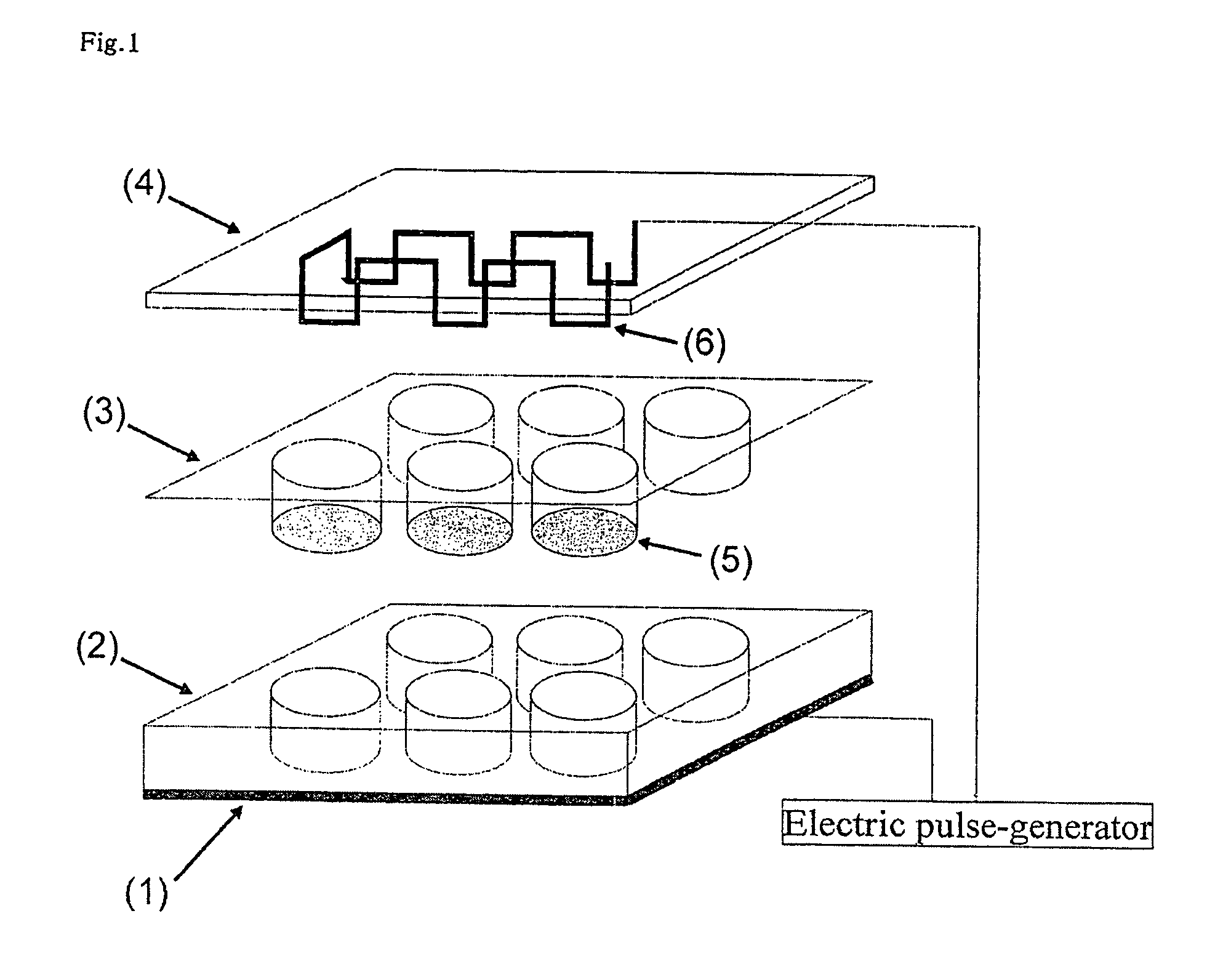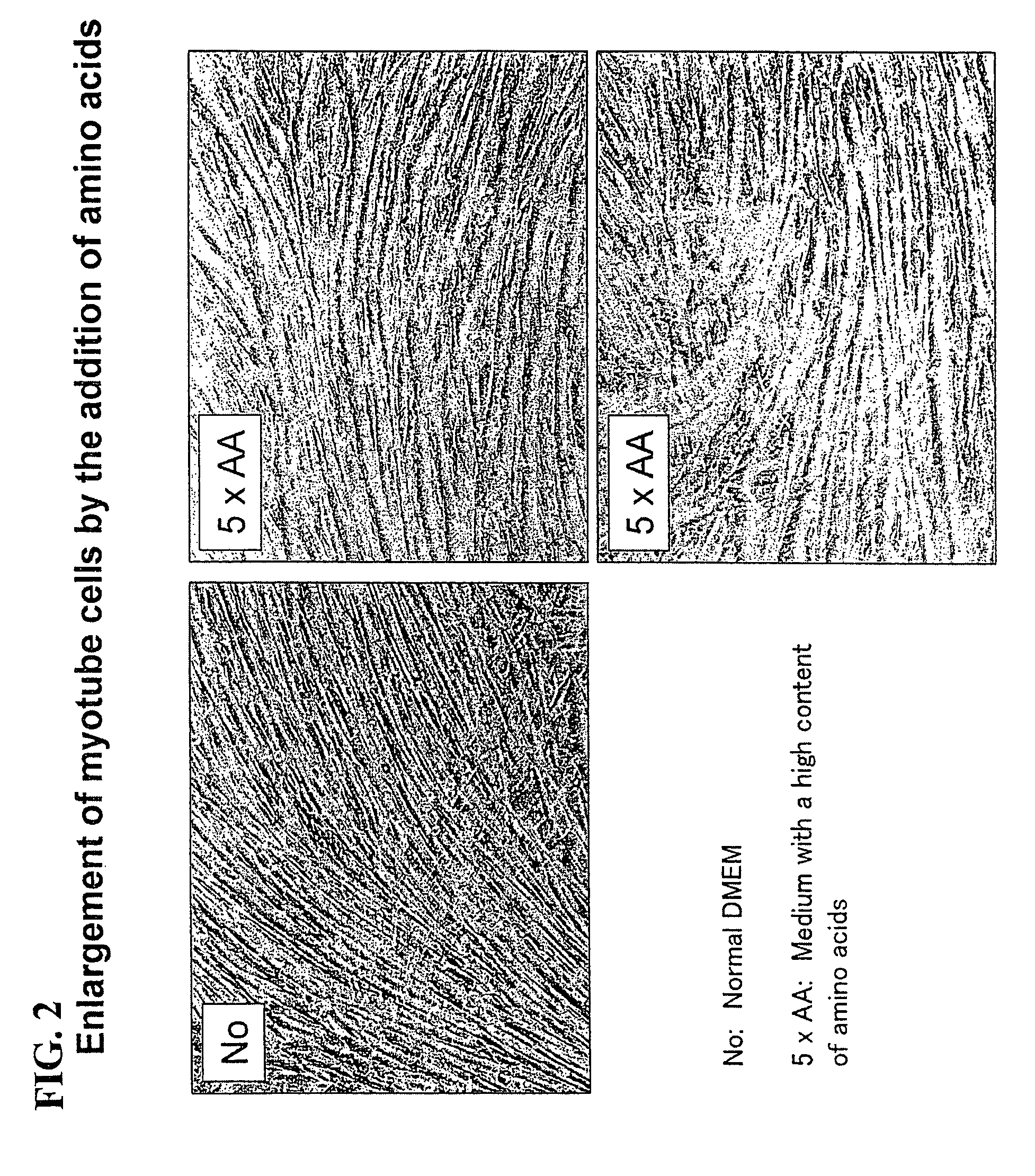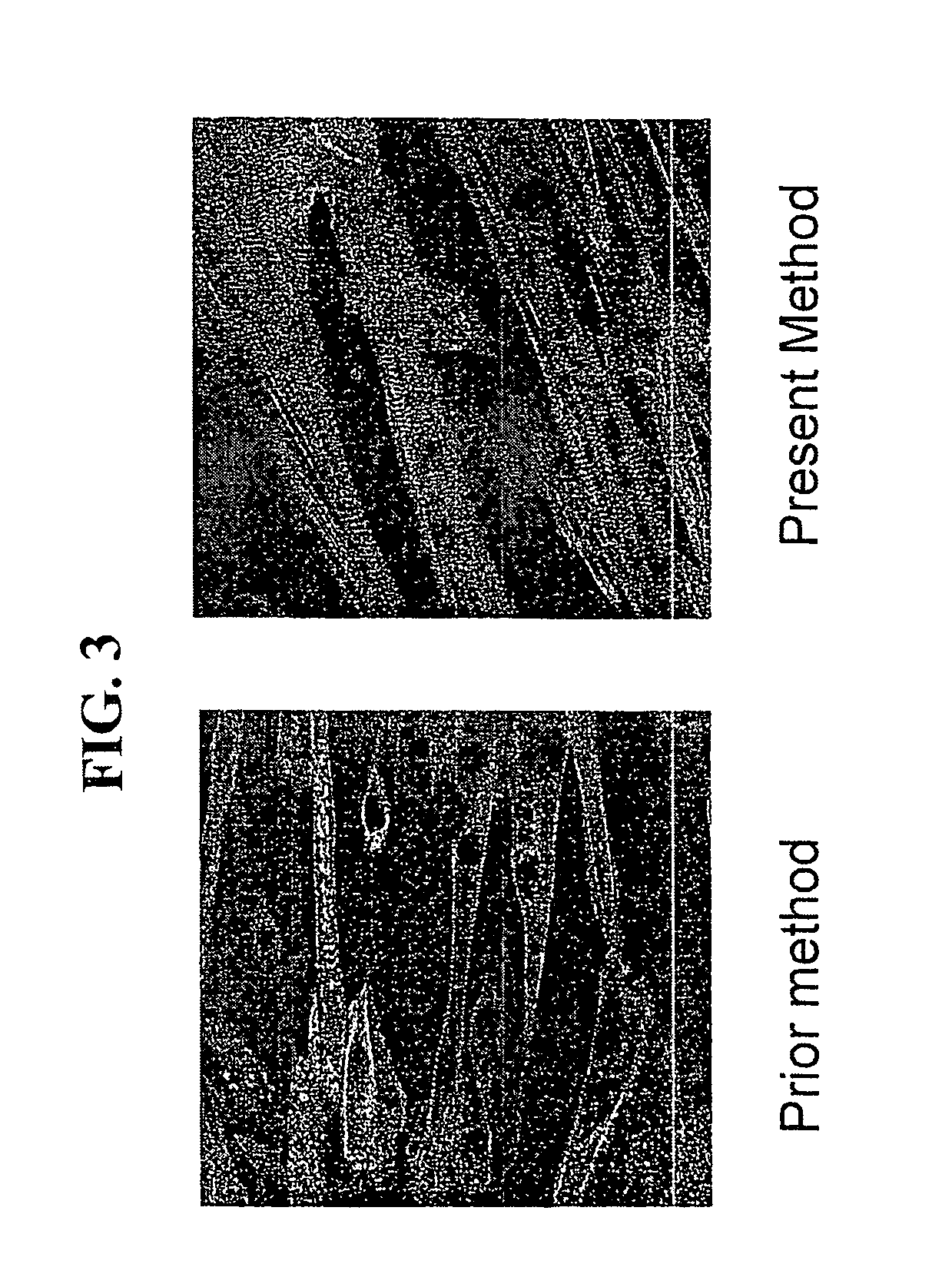Cultured muscle cells with high metabolic activity and method for production of the cultured muscle cells
a technology of cultured muscle cells and metabolic activity, which is applied in the direction of biocide, skeletal/connective tissue cells, instruments, etc., can solve the problems of large energy consumption, ethical issues, and difficulty in maintaining the contractional activity of muscle cells that is sufficiently active, so as to increase the percentage of cells having such muscle structure, increase the glucose metabolic capacity, and the effect of sensitive evaluation of metabolic capacity
- Summary
- Abstract
- Description
- Claims
- Application Information
AI Technical Summary
Benefits of technology
Problems solved by technology
Method used
Image
Examples
preparation example 1
[0141]A mixed solution of collagen (0.1-100 μg / ml), fibronectin (1-100 μg / ml), and a drug (K252a=100 nM) that promotes extra-cellular matrix and differentiation of muscle cells of elastin (1-100 μg / ml) was supplemented on a cellulate semipermeable membrane in the insert chamber of the above apparatus, and was let to stand at room temperature. Subsequently, the mixed solution was removed from the insert chamber specially-treated as above, and the chamber was washed with Dulbecco's modified phosphate buffered saline several times, and 1×105 C2C12 cells of a mouse myoblast strain / well (4-well plate) were disseminated.
[0142]Subsequently, the C2C12 myoblast cells were cultured for 3 days using a Dulbecco's modified Eagle medium +10% fetal bovine serum until they became confluent. Subsequently, the medium was replaced with a Dulbecco's modified Eagle medium +2% bovine serum for culturing for 8 days, and the cells were differentiated into myotube cells. Moreover, in order to promote consta...
preparation example 2
[0144]Subsequently, changes in the sugar uptake amount (amount of energy consumption) of the C2C12 cells in applying an electric pulse under various conditions were examined. After the C2C12 myoblast cells that were put in a confluent condition as in Preparation Example 1 were cultured in DMEM+2% bovine serum for 8 days, an electric pulse was applied under the various conditions shown in FIG. 5 (A). After the electric pulses were applied, the cells were left at rest on ice to stop the metabolic response, and subsequently, 2-deoxyglucose (0.1 mM, 0.5 uCi / ml) radiolabeled with tritium was incorporated into the cells for 4 minutes, and the total of its uptake amount was measured using a liquid scintillation counter to determine the sugar uptake amount (glucose metabolic capacity) of the cells. Consequently, it was shown that the sugar uptake amount, in other words, amount of energy consumption, of the cells increased in an electric pulse-dependent manner under certain conditions of an ...
example 1
Measurement Example 1
[0147]After the myotube cells prepared by differentiation-inducing the C2C12 myoblast cells in a serum-free culture medium (DMEM) for 4 hours according to Preparation Example 1, and eliminating the influence of serum hormone, they were stimulated for 15 minutes with insulin with a final concentration of 100 nM dissolved in KRpH (10 mM phosphate buffer, pH 7.6, 1 mM MgSO4, 1 mM CaCl2, 136 mM NaCl, 4.7 mM KCl, 10 mM HEPES, pH 7.6), and subsequently, the culture medium was replaced with KRPH containing 100 nM of insulin and glucose with the intended concentration, and they were treated for 45 more minutes. After the treatment, the metabolic response was stopped by leaving the cell culture chamber at rest on ice, and they were washed 3 times with KRPH under a condition of enriched oxygen. The sugar uptake of the myotube cells was evaluated by incorporating radiolabeled 2-deoxyglucose (0.1 mM, 0.5 uCi / ml) into the cells for 4 minutes, and how much radiation was incor...
PUM
| Property | Measurement | Unit |
|---|---|---|
| concentration | aaaaa | aaaaa |
| structure | aaaaa | aaaaa |
| partial pressure | aaaaa | aaaaa |
Abstract
Description
Claims
Application Information
 Login to View More
Login to View More - R&D
- Intellectual Property
- Life Sciences
- Materials
- Tech Scout
- Unparalleled Data Quality
- Higher Quality Content
- 60% Fewer Hallucinations
Browse by: Latest US Patents, China's latest patents, Technical Efficacy Thesaurus, Application Domain, Technology Topic, Popular Technical Reports.
© 2025 PatSnap. All rights reserved.Legal|Privacy policy|Modern Slavery Act Transparency Statement|Sitemap|About US| Contact US: help@patsnap.com



